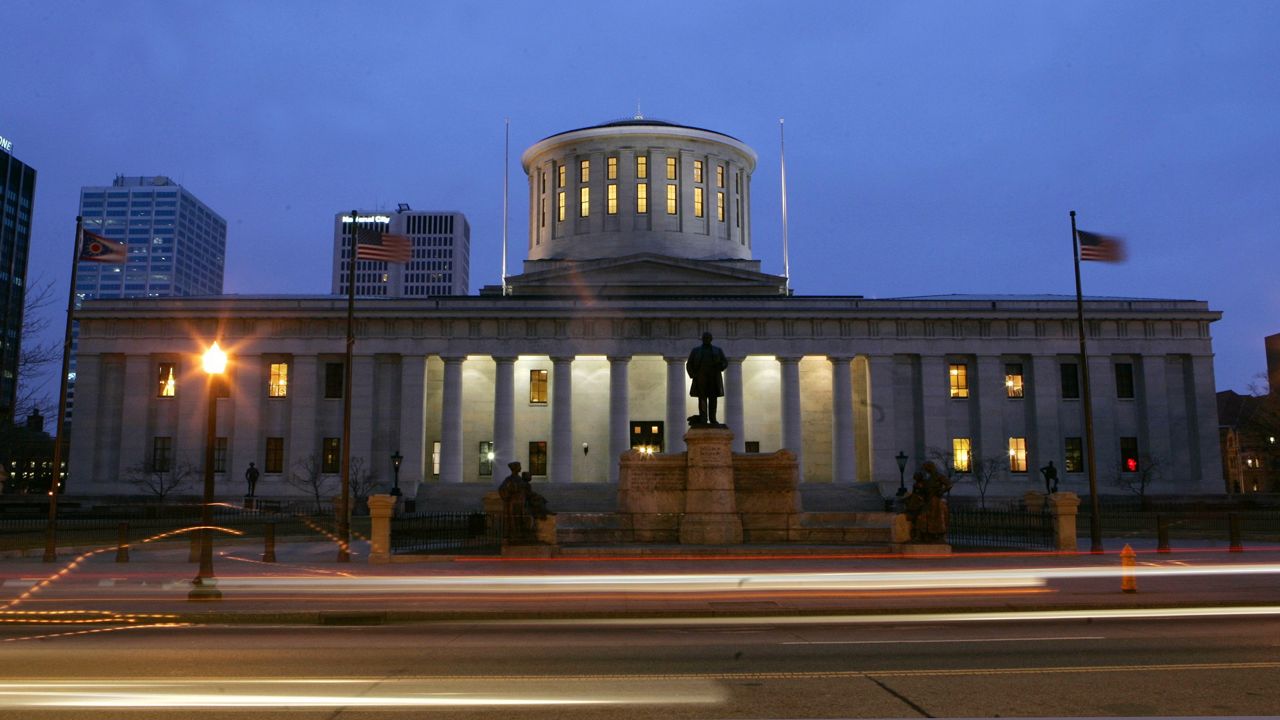COLUMBUS, Ohio (AP) — The Republican-dominated Ohio Senate cleared its version of the state’s operating budget Thursday along party lines with a nearly $86 billion price tag, tackling funding for universal school vouchers, income tax cuts and public assistance programs, among hundreds of other provisions.
The 7,000-page proposal is also stuffed with contentious policy changes, including a K-12 education overhaul, bans on flavored vape sales and certain social media apps, and prohibitions on faculty strikes and diversity mandates at public colleges and universities.
Changes must still be ironed out with the GOP-led House, where a contingent of the Republican super-majority wants to accept the Senate’s version despite vast changes from their April budget proposal.
House Speaker Jason Stephens, a rural southern Ohio Republican, told reporters the chamber will continue negotiations, though fellow GOP Rep. Phil Plummer, of Dayton, said those unhappy with Stephens’ leadership are gathering votes to cut negotiations short.
Continuous headbutting between House factions raises questions about whether the lower chamber can come together — and perhaps hints why proposed policy changes made it into the budget before being subject to hearings.
The fiscal elements have also been the target of critics. Spending cuts to childcare, public education, food banks and affordable housing are prompting Democrats and advocates in those fields to deem the budget “heartless.”
Here’s a glance at how the state Senate proposes spending Ohio’s billions and what policies they want to implement:
1. Roughly $2 billion would be spent phasing in a universal voucher program over the next two years, providing income-based scholarships of varying amounts for any Ohio child to attend private school.
2. The Senate eliminated a House provision setting a base salary of $40,000 for teachers and removed a measure to expand funding for free school meals for public school students.
3. One provision would ban nearly all diversity and inclusion training requirements at public colleges and universities, prohibit faculty strikes and bar public universities from taking stances on “controversial” topics, such as abortion and climate policies.
4. It would also shift K-12 education oversight from the Ohio State Board of Education to an official appointed by the governor — drastically changing who makes decisions about academic standards, curriculum and district ratings.
5. The budget also would continue implementing the fairer, more reliable school funding formula from the last two-year budget, with updated costs for teacher salaries, transportation and technology factored in.
6. Under the Senate’s plan, Ohioans could see $1.5 billion in income tax deductions over the next two years — $500 million more than the House’s version, in part by consolidating the current four tax brackets down to two.
7. A business tax cut would eliminate the state’s Commercial Activities Tax for 90% of companies who currently pay it.
8. The Senate restored GOP Gov. Mike DeWine’s provisions on housing taxes nixed by the House, including creating a state Low Income Housing Tax Credit program, income tax deductions for homeownership savings accounts and a tax credit for the construction of single-family affordable housing.
9. Sales tax on certain baby products would be eliminated.
10. A $2,500 child tax deduction pushed by DeWine but nixed by the House remains out of the budget.
11. Food banks saw major cuts to their state funding in the Senate’s budget versus the House’s, even as demand for their services have increased across the state, according to the Ohio Association of Food Banks.
12. In-home Medicaid care providers would see an hourly wage increase to $17 in FY24 and $18 in FY25, up from the current $13, in an effort to address workforce shortages.
13. $16 million would be allotted for a program that helps pregnant women in unstable housing pay rent.
14. The Senate proposed raising the income eligibility for government-funded child care to 145% of the federal poverty level versus the House’s proposed 160%. The current threshold is only 142%, and critics say the small hike would not help with Ohio’s scarcity of affordable childcare.
15. In an attempt to counter fraud, those seeking food stamps could face more requirements including providing a phone number and photo ID.
16. The budget would lower the minimum age of a police officer from 21 to 18.
17. It would implement a ban on selling favored tobacco products.
18. The Senate would remove $1 billion in earmarks for one-time spending, instead using $1 billion in leftover federal revenue and taxpayer money to create a One Time Community Investment Fund for special projects.
19. $16 million would be appropriated for a hotly contested Republican-backed August special election that could impact abortion rights.
20. It would also include a measure to require parental consent on social media platforms for Ohio children under 16. And state employees and contractors would be banned from using Chinese-based social media platforms such as TikTok on state devices.



